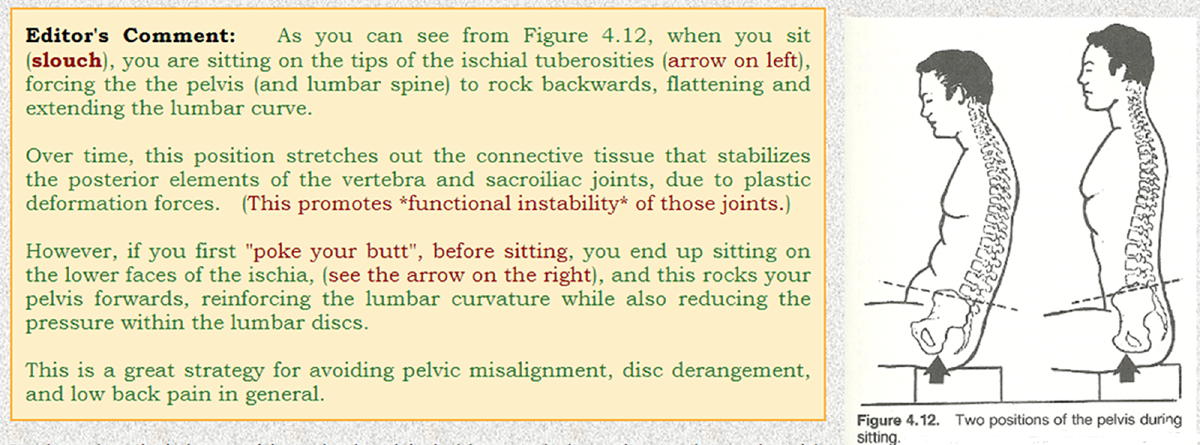

Association of Exposures to Seated Postures With Immediate Increases
in Back Pain: A Systematic Review of Studies With
Objectively Measured Sitting TimeThis section is compiled by Frank M. Painter, D.C.
Send all comments or additions to: Frankp@chiro.org




FROM: J Manipulative Physiol Ther. 2020 (Feb 17) [Epub] ~ FULL TEXT
Diana E. De Carvalho, DC, PhD, Katie de Luca, B App Sci (Ex & Sp Sci), M Chiro, PhD, Martha Funabashi, PhD, Gregory Neil Kawchuk, DC, PhD, Jon Adams, PhD, Jan Hartvigsen, DC, PhD
Department of Sports Science and Clinical Biomechanics,
University of Southern Denmark,
Odense, Denmark
OBJECTIVE: The purpose of this study was to conduct a systematic review of studies to determine whether sitting time measured objectively (by laboratory controlled time trial, direct observation, or wearable sensor) is associated with the immediate increase in low back pain (LBP) (determined by pain scale rating) in people >18 years of age.
METHODS: Four databases (PubMed, EMBASE, SPORTDiscus, and Cumulative Index to Nursing and Allied Health Literature) were searched from inception to September 1, 2018. Randomized controlled trials and cohort and cross-sectional studies, where objectively measured sitting time was temporally matched with a measure of LBP in adults, were included. Studies without a control session conducted on a separate day were excluded. Screening, full-text review, data extraction, and risk of bias assessment (Quality In Prognosis Studies) of included papers were performed independently by 2 reviewers, with a third available to resolve disagreements.
RESULTS: In total, 609 articles were identified, 361 titles/abstracts were screened,75 full-text articles were assessed for eligibility, and 10 met the inclusion criteria. All but 1 reported sitting time to be associated with an immediate increase in LBP. Six of these reported clinically relevant pain levels (n = 330). Half of the included studies were rated as having a low risk of bias and the remaining were rated as having a moderate risk of bias.
CONCLUSION: Prolonged sitting increases immediate reporting of LBP in adults; however, no conclusion between sitting and clinical episodes of LBP can be made. Based upon these findings, we recommend that future prospective studies should match objectively measured sitting with temporally related pain measurements to determine whether prolonged sitting can trigger a clinical episode of LBP.
KEYWORDS: Accelerometry; Actigraphy; Low Back Pain; Occupational Diseases; Pain Measurement; Risk Factors; Sedentary Behavior; Sitting Position; Time Factors
Return to LOW BACK PAIN
Since 2-24-2020


| Home Page | Visit Our Sponsors | Become a Sponsor |
Please read our DISCLAIMER |
